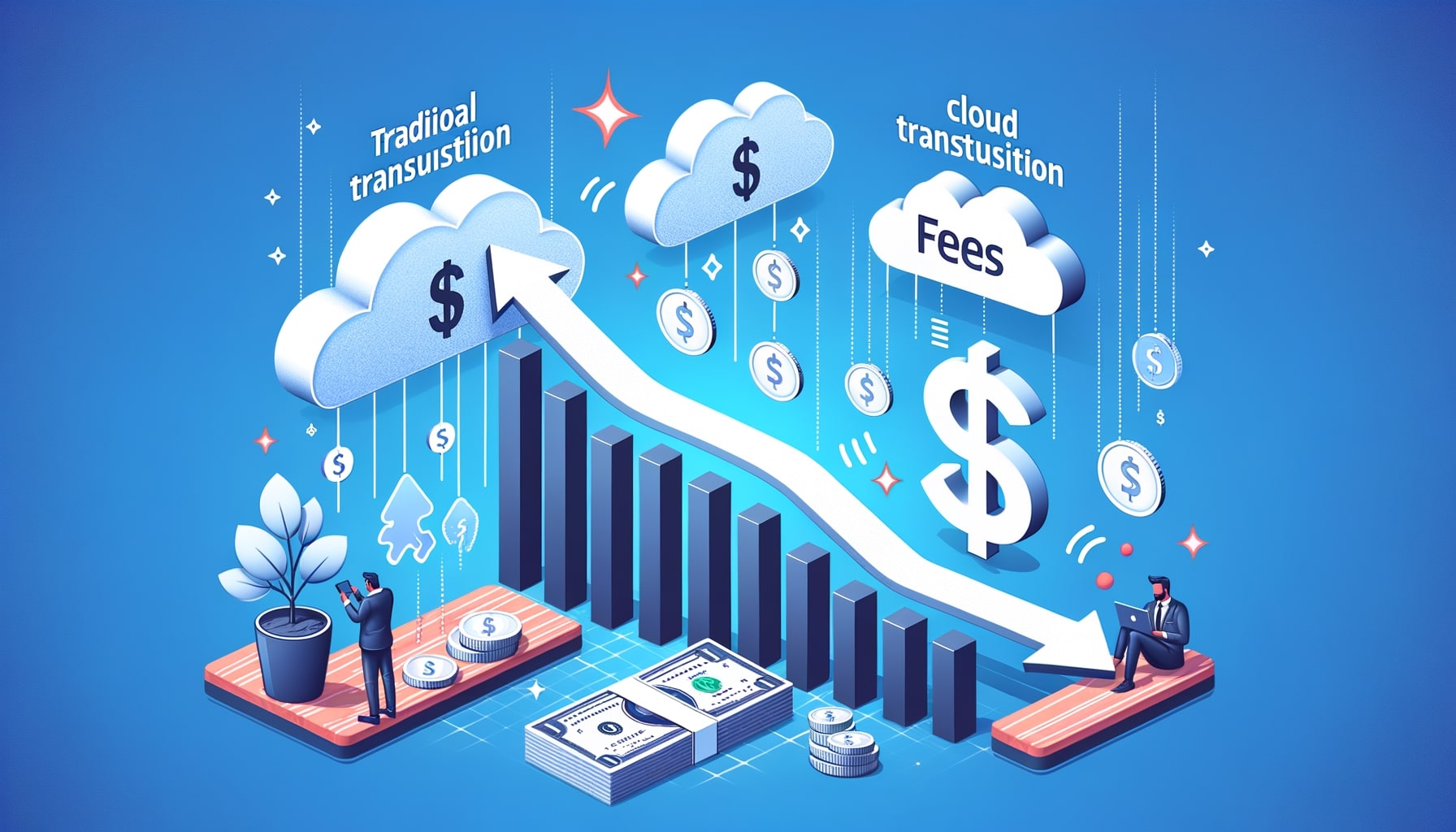Environmental Sustainability and Cloud Payments
As businesses and individuals strive to reduce their carbon footprint and adopt sustainable practices, innovative solutions are emerging to address these challenges. One such solution is the integration of cloud payments, which not only streamline financial transactions but also contribute to environmental sustainability. This article aims to explore the role of cloud payments in promoting a greener future, highlighting their impact on reducing carbon footprint, energy efficiency, waste reduction, conservation of natural resources, and addressing concerns regarding security and reliability. Additionally, we will discuss the future of sustainable business practices and the latest innovations and trends in cloud payments for environmental sustainability.
Understanding Environmental Sustainability and its Importance
To comprehend the significance of cloud payments in promoting environmental sustainability, it is essential to first understand the concept of environmental sustainability itself. Environmental sustainability refers to the responsible use and preservation of natural resources to meet the needs of the present generation without compromising the ability of future generations to meet their own needs. It involves adopting practices that minimize negative impacts on the environment, conserve resources, and promote long-term ecological balance.
The importance of environmental sustainability cannot be overstated. With the increasing threats of climate change, resource depletion, and pollution, it is imperative for individuals, businesses, and governments to take proactive measures to protect the planet. By embracing sustainable practices, we can mitigate the adverse effects of human activities on the environment, preserve biodiversity, and ensure a better future for generations to come.
The Role of Cloud Payments in Promoting Environmental Sustainability

Cloud payments, also known as electronic or digital payments, refer to the use of online platforms and technologies to facilitate financial transactions. This method eliminates the need for physical cash or checks, allowing individuals and businesses to make payments electronically. While the primary objective of cloud payments is to enhance convenience and efficiency, they also play a significant role in promoting environmental sustainability.
How Cloud Payments Reduce Carbon Footprint
One of the key ways in which cloud payments contribute to environmental sustainability is by reducing carbon footprint. Traditional payment methods, such as cash or checks, involve the production, transportation, and disposal of physical materials, which contribute to greenhouse gas emissions. In contrast, cloud payments eliminate the need for these physical transactions, thereby reducing carbon emissions associated with the entire payment process.
By embracing cloud payments, individuals and businesses can significantly reduce their carbon footprint. According to a study conducted by the Environmental Paper Network, a single paper check transaction generates an average of 6.6 grams of CO2 emissions. In contrast, an electronic payment transaction produces only 0.2 grams of CO2 emissions. This stark difference highlights the environmental benefits of transitioning to cloud payments.
Energy Efficiency in Cloud Payments: Exploring the Benefits
Another significant advantage of cloud payments in promoting environmental sustainability is their energy efficiency. Traditional payment methods, such as cash registers or point-of-sale terminals, require substantial energy consumption to operate. On the other hand, cloud payment systems rely on digital infrastructure, which is designed to be energy-efficient.
Cloud payment platforms utilize data centers that are optimized for energy efficiency, employing advanced cooling systems and energy management techniques. These data centers consolidate multiple servers, reducing the overall energy consumption required for processing transactions. Additionally, cloud payment systems are designed to minimize idle time and maximize processing efficiency, further reducing energy consumption.
The impact of energy efficiency in cloud payments is substantial. According to a report by the Carbon Disclosure Project, the adoption of cloud computing technologies, including cloud payments, has the potential to reduce global carbon emissions by 85.7 million metric tons per year by 2020. This reduction is equivalent to the annual emissions of 16.5 million cars. These statistics highlight the significant role that energy-efficient cloud payments can play in mitigating climate change.
The Impact of Cloud Payments on Waste Reduction
In addition to reducing carbon footprint and energy consumption, cloud payments also contribute to waste reduction. Traditional payment methods, such as paper checks or receipts, generate a significant amount of waste that ends up in landfills. By transitioning to cloud payments, individuals and businesses can minimize the production and disposal of physical materials, thereby reducing waste generation.
Cloud payment systems enable electronic receipts, eliminating the need for paper receipts that often end up discarded. Additionally, the use of digital invoices and statements reduces the need for printing and mailing physical documents. These practices not only reduce waste but also conserve resources, such as paper and ink, that are used in the production of physical payment-related materials.
According to a study conducted by the PayItGreen Alliance, if every U.S. household made just one electronic payment per month instead of using paper checks, it would save 1.8 million pounds of paper and avoid the release of 2.2 million tons of greenhouse gases annually. These figures demonstrate the significant waste reduction potential of cloud payments.
Cloud Payments and the Conservation of Natural Resources
Cloud payments also contribute to the conservation of natural resources. Traditional payment methods, such as cash or checks, rely on the use of physical materials that are derived from natural resources. The production of these materials, such as paper or metal, requires the extraction of raw materials and energy-intensive manufacturing processes.
By transitioning to cloud payments, individuals and businesses can reduce their reliance on these physical materials, thereby conserving natural resources. The use of electronic payment methods eliminates the need for paper checks, reducing the demand for paper production. Additionally, cloud payment systems often utilize renewable energy sources to power their data centers, further reducing the reliance on fossil fuels.
According to a report by the World Wildlife Fund, the adoption of cloud computing technologies, including cloud payments, has the potential to reduce global water consumption by 9.1 trillion liters by 2020. This reduction is equivalent to the annual water consumption of 1.9 million Americans. These statistics highlight the significant role that cloud payments can play in conserving natural resources.
Addressing Concerns: Is Cloud Payment Secure and Reliable?
One common concern regarding cloud payments is the security and reliability of these systems. Individuals and businesses want assurance that their financial transactions are protected from unauthorized access or data breaches. Fortunately, cloud payment systems have evolved to address these concerns and provide robust security measures.
Cloud payment platforms employ advanced encryption technologies to secure financial data during transmission and storage. These encryption techniques ensure that sensitive information, such as credit card details or bank account numbers, is protected from unauthorized access. Additionally, cloud payment systems often undergo rigorous security audits and certifications to ensure compliance with industry standards and regulations.
Furthermore, cloud payment systems offer redundancy and backup mechanisms to ensure the reliability of transactions. These systems are designed to handle high volumes of transactions and provide uninterrupted service, even in the event of hardware failures or network disruptions. The use of redundant servers and data centers ensures that transactions can be processed seamlessly, minimizing the risk of service interruptions.
It is important to note that while cloud payment systems have robust security measures in place, individuals and businesses must also take precautions to protect their own devices and credentials. Implementing strong passwords, regularly updating software, and being vigilant against phishing attempts are essential practices to ensure the security of cloud payments.
Cloud Payments and the Future of Sustainable Business Practices
Cloud payments are not only a tool for individual consumers but also hold immense potential for businesses to adopt sustainable practices. By embracing cloud payment systems, businesses can streamline their financial operations, reduce costs, and contribute to environmental sustainability.
Cloud payment platforms offer businesses the ability to automate payment processes, reducing the need for manual intervention and paperwork. This automation not only saves time but also minimizes the risk of errors or delays in financial transactions. Additionally, cloud payment systems provide businesses with real-time access to financial data, enabling better decision-making and financial planning.
Furthermore, cloud payment systems often integrate with other business management tools, such as accounting software or customer relationship management systems. This integration allows for seamless data flow and eliminates the need for manual data entry, reducing the risk of errors and improving overall operational efficiency.
The adoption of cloud payment systems also enables businesses to offer a wider range of payment options to their customers. By accepting electronic payments, businesses can cater to the preferences of modern consumers who increasingly rely on digital payment methods. This flexibility not only enhances customer satisfaction but also expands business opportunities.
The Road Ahead: Innovations and Trends in Cloud Payments for Environmental Sustainability
As technology continues to advance, the future of cloud payments for environmental sustainability looks promising. Innovations and trends in this field are emerging, further enhancing the environmental benefits of cloud payments.
One such trend is the integration of artificial intelligence (AI) and machine learning (ML) in cloud payment systems. AI and ML algorithms can analyze transaction data and identify patterns or anomalies, enabling businesses to detect fraudulent activities and enhance security measures. Additionally, AI-powered chatbots and virtual assistants can provide personalized customer support, further improving the user experience.
Another emerging trend is the use of blockchain technology in cloud payments. Blockchain, a decentralized and transparent ledger system, offers enhanced security and traceability for financial transactions. By leveraging blockchain technology, cloud payment systems can provide an immutable record of transactions, reducing the risk of fraud and ensuring transparency.
Furthermore, the adoption of contactless payment methods, such as mobile wallets or near-field communication (NFC) technology, is gaining momentum. These payment methods eliminate the need for physical cards or cash, further reducing the environmental impact of payment transactions. Additionally, the use of biometric authentication, such as fingerprint or facial recognition, enhances security and convenience in contactless payments.
FAQs:
Q.1: What is environmental sustainability, and why is it important?
Answer: Environmental sustainability refers to the responsible use and preservation of natural resources to meet the needs of the present generation without compromising the ability of future generations to meet their own needs. It is important because it helps mitigate the adverse effects of human activities on the environment, preserve biodiversity, and ensure a better future for generations to come.
Q.2: How do cloud payments contribute to environmental sustainability?
Answer: Cloud payments contribute to environmental sustainability by reducing carbon footprint, energy consumption, waste generation, and the reliance on natural resources associated with traditional payment methods.
Q.3: How do cloud payments reduce carbon footprint?
Answer: Cloud payments reduce carbon footprint by eliminating the need for physical transactions, which involve the production, transportation, and disposal of materials that contribute to greenhouse gas emissions.
Q.4: What are the benefits of energy efficiency in cloud payments?
Answer: Energy efficiency in cloud payments reduces overall energy consumption, mitigates climate change, and lowers operational costs for businesses.
Q.5: How do cloud payments help in waste reduction?
Answer: Cloud payments help in waste reduction by eliminating the need for physical materials, such as paper checks or receipts, which often end up discarded and contribute to landfill waste.
Q.6: How do cloud payments contribute to the conservation of natural resources?
Answer: Cloud payments contribute to the conservation of natural resources by reducing the demand for physical materials derived from natural resources, such as paper or metal.
Q.7: Are cloud payments secure and reliable?
Answer: Yes, cloud payment systems employ advanced encryption technologies, undergo security audits, and provide redundancy and backup mechanisms to ensure the security and reliability of transactions.
Q.8: How can businesses adopt cloud payments for sustainable practices?
Answer: Businesses can adopt cloud payments for sustainable practices by transitioning from traditional payment methods, automating payment processes, integrating with other business management tools, and offering a wider range of payment options to customers.
Q.9: What are the latest innovations and trends in cloud payments for environmental sustainability?
Answer: The latest innovations and trends in cloud payments for environmental sustainability include the integration of artificial intelligence and machine learning, the use of blockchain technology, the adoption of contactless payment methods, and the implementation of biometric authentication.
Q.10: How can individuals contribute to environmental sustainability through cloud payments?
Answer: Individuals can contribute to environmental sustainability through cloud payments by opting for electronic payment methods, reducing the use of physical materials, and supporting businesses that prioritize sustainable practices.
Conclusion
Environmental sustainability and cloud payments are intertwined in their pursuit of a greener future. By embracing cloud payments, individuals and businesses can significantly reduce their carbon footprint, conserve energy, minimize waste generation, and contribute to the conservation of natural resources. The security and reliability of cloud payment systems have been addressed through advanced encryption technologies, security audits, and redundancy measures. The future of cloud payments for environmental sustainability looks promising, with innovations such as artificial intelligence, blockchain technology, and contactless payment methods on the horizon.










